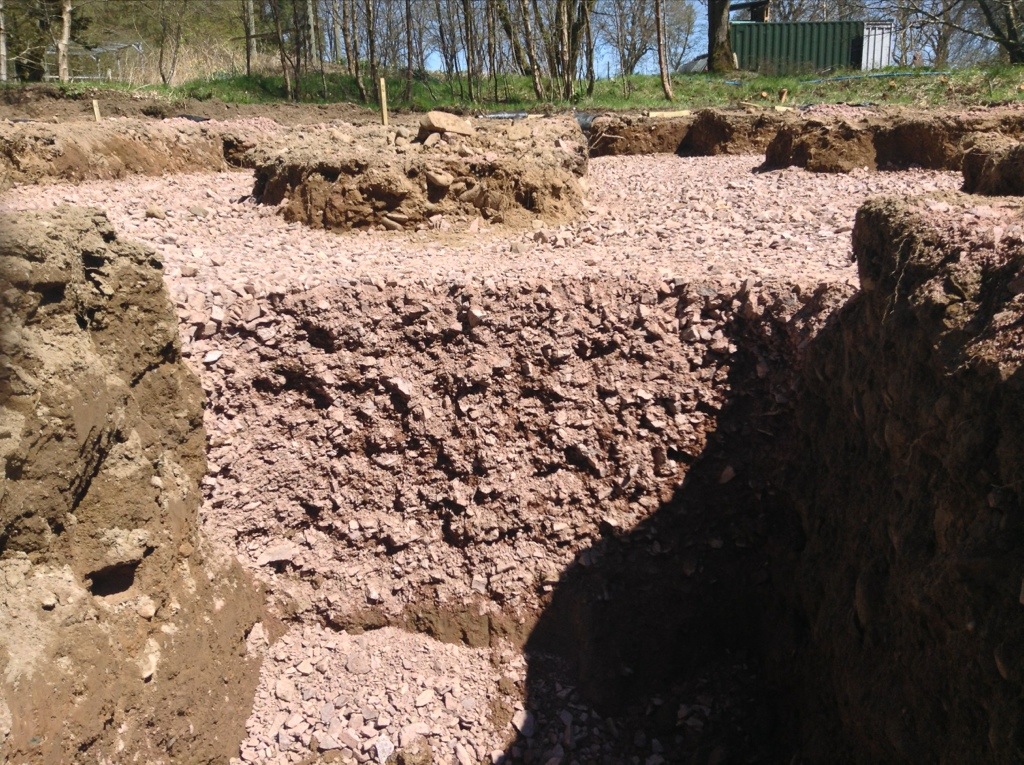Our structural engineer specified MOT Type 1 Sub-Base aggregate for the foundations. It’s a highly-specified aggregate in terms of particle sizes with well understood compression rates and characteristics. While it may have been possible to get by with aggregate of a more random composition (for instance a 6F2), it was important that we were certain the foundations would work – obviously they can’t be changed later on and have a significant impact on whether the house stays up properly. By using Type 1 Sub-Base, our engineer was certain that the (very heavy) cob walls will be properly supported.
We did all we could to find something suitable that was recycled. The internet is a good place to start searching, but only gets you so far. So there were many hours on the phone and a train adventure out to a processing plant in West Lothian to inspect the composition of their aggregate and take samples of two options to our structural engineer. Neither worked unfortunately.
While there are several sources of recycled aggregate within 30 miles of our site, none of them turned out to be suitable because either:
- they were certified as Type 1 but could not be guaranteed to be free of bitumen. (Current MOT specifications allow for up to 50% of a recycled Type 1 Sub-Base to be bitumen or asphalt. This seems mainly due to the fact that the main market for a recycled Type 1 is for roads.) We were not happy putting bitumen or asphalt into the ground and both can react with the lime mortar we will use in the stone walls on which the cob will sit.
- they were not certified as Type 1; our engineer did consider whether the aggregate composition of a 6F2 was suitable anyway, but in the end he felt we needed to play it safe and go with Type 1.
And so in our situation, it came down to a choice between using new Type 1 or not being certain as to whether our foundations will hold up properly. And so our aggregate, while new, is from a local quarry and certainly better than using concrete (which, amongst other problems, is also responsible for significant quarrying activity).
In another time and place the situation might be different. There are 100% stone recycled Type 1 Sub-Base sources in the UK. There are 100% recycled crushed concrete Type 1 Sub-Base sources as well. All were a hundred-plus miles away from us (or no longer in business despite websites still being up!).
There are also some very old cob houses still standing with little to no foundations under them. Yet while this clearly worked for these specific houses, what we don’t know is how many houses were built in the past with little or no foundation and later fell down.
At this point and time, we aren’t sure how we could have done this any better but are not entirely happy that we ended up with ‘virgin’ Type 1. A recycled all stone/crushed concrete Type 1 would clearly have been preferable. (Or even another completely concrete-free foundation option.) It’s hopefully something that folks like CAT and SEDA will explore in more detail in the future.

